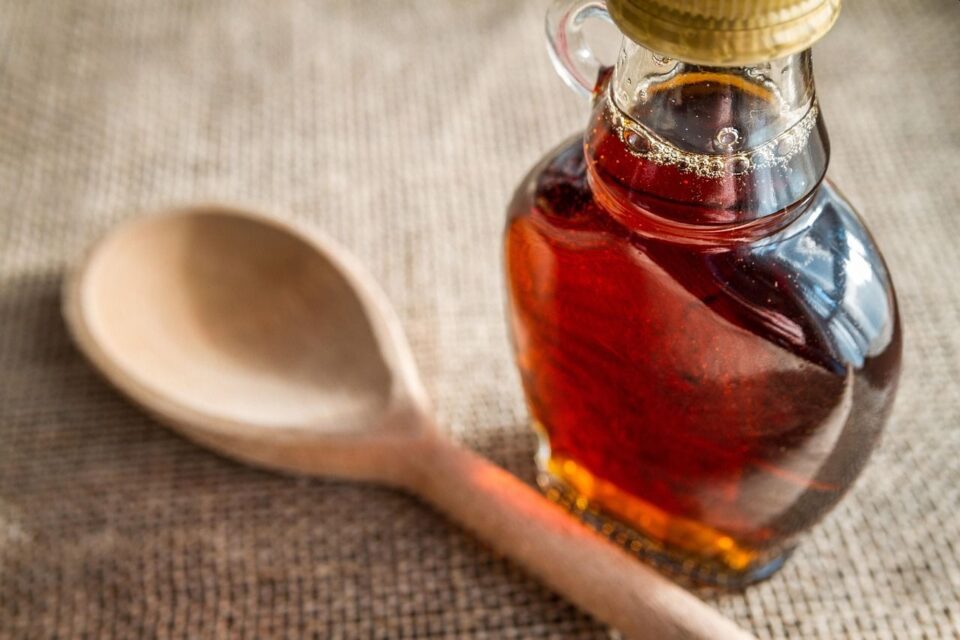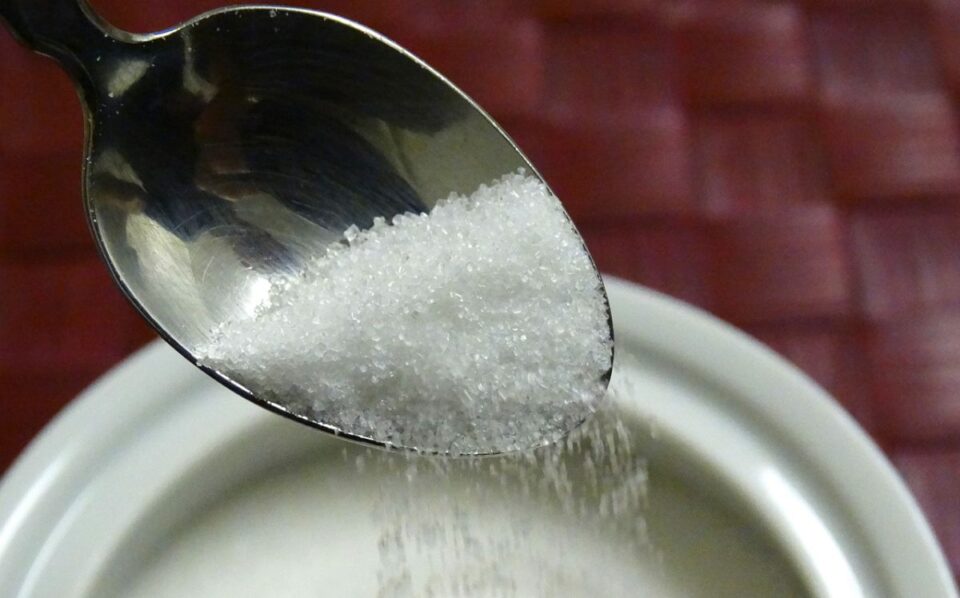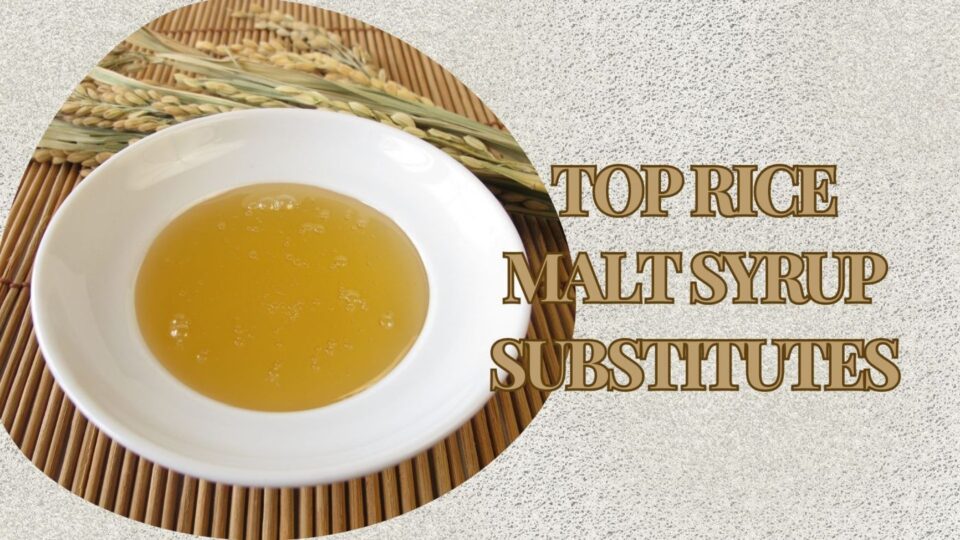When picking rice malt syrup substitutes, there are a few things that we need to consider for a successful substitution. That’s because rice malt syrup often serves several roles in a recipe.
It’s a sweetener, a binder (binding agent), offers consistency, and contributes to the texture and color of the recipe. It can also add a touch of chewiness and crispiness to food, giving many recipes their unique characteristics.
I opened the article with these characteristics of the rice malt syrup to dispel the misconception that it’s only job is as a sweetener. However, as we see, it provides quite a few features to a recipe, which is why we can’t simply dunk some sugar as an alternative and call it a day.
Rice malt syrup, also known as rice syrup and brown rice syrup in many recipes, especially from East Asian and Southeast Asian cuisine. However, it’s increasingly popular around the world, and it so happens that its substitutes are pretty global too.
Best and most suitable rice malt syrup substitutes are barley malt syrup, agave nectar, honey, corn syrup, maple syrup, coconut nectar, molasses, and date syrup. However, additional care might be necessary for diet preferences. As an example, rice malt syrup is gluten free, but barley malt syrup is not.
Let’s take a deeper look at these options and their substitution for rice malt syrup.
Table of Contents
Top Rice Malt Syrup Substitutes
1. Barley Malt Syrup
As options go, barley malt syrup gets pretty close as a rice malt syrup substitute thanks to a similar appearance and flavor. It maintains similar flavor notes to rice syrup, thus making the substitution more convenient and easier to manage.
Yet, the substitution isn’t as straightforward. Barley malt syrup is sweeter, darker, and more viscous than brown rice syrup. So, you’d want to make slight changes in the substitution.
Generally, ¾ cup of barley malt syrup is good enough to replace one cup of rice malt syrup. Of course, there’s always room to adjust this to reach the sweetness you want. As for other attributes like color and consistency, you may want to dilute barley malt syrup with some water to get it more in line with the qualities of rice syrup.
Some people prefer to mix in other sweeteners like honey with barley malt syrup to manage the sweetness and consistency, which is an acceptable choice too. Just take your pick and see what works for you!
The most difficult part about barley malt syrup is availability. If you can’t find rice syrup in your local stores, there’s a chance you won’t find barley malt syrup either. Many countries with thriving ecommerce ecosystems have the syrup available online, but the pricing might be at a premium.
2. Agave Nectar
Over the last few years, agave nectar (also called agave syrup) has seen a consistent rise in its use and popularity. Much like rice syrup, it’s vegan, sweet, and has a suitable consistency. These qualities make it the perfect fit for being a rice malt syrup substitute.
Conventional agave nectar is light in color, with an appearance that’s something like honey. However, if you’d like to maintain the color of the recipe, look for the dark agave syrup. The color for the dark agave nectar is more in line with the color for rice syrup.
This way, your substitution will work quite well, including the color profile of the substitute. Although, it’s worth noting that agave nectar is sweeter than rice syrup. So, start the substitution by using ¾ cup of agave syrup to replace 1 cup of brown rice syrup. Adding a little more agave should work fine, but it is better to be sure.
3. Honey

Honey can be a remarkable substitute for brown rice syrup. In some ways, its suitability as a substitute is encouraged by its easy availability and decent pricing. As things stand, it is possible to get good quality honey in pretty much every part of the world and at an affordable price.
Besides, honey is incredibly versatile. It works well in terms of binding, coloring, and consistency, thus handling most tasks that would be expected of a substitute. However, honey is not vegan, which can be a problem for this specific dietary preference.
The type of honey you use can affect its sweetness. Generally though, honey is slightly sweeter than rice malt syrup. So, use slightly less honey than the syrup for the substitution, and the recipe should go just fine.
4. Maple Syrup

The sweet, tasty delicacy that is maple syrup can also work its role as a wonderful malt syrup substitute. There will be a notable change in flavor, as maple syrup adds its own distinctive taste.
Yet, it shouldn’t be too overpowering. In most cases, it should provide the sweetness and color without taking the recipe too far off its track. Still, maple syrup is somewhat removed from rice syrup in its flavors, so it’s best you expect some changes when using this substitute.
In most cases, ¾ cup of maple syrup should be enough to replace one cup of rice malt syrup.
5. Corn Syrup
Corn syrup is a fairly common, affordably-priced sweetener that can work as a rice malt syrup substitute in most cases. In fact, dark corn syrup would be an even better option in this case, considering it also offers a similar color as rice syrup. This should be a plus, especially when compared to the plain and colorless corn syrup.
That said, except the color, either type of corn syrup can work as a suitable alternative for rice malt syrup.
It helps that corn syrup is extremely versatile and can work in most cooking and sweetening needs.
I will refrain from making any remarks on any option listed here being “healthy”. Much of these claims are questionable and are better discussed with a dietitian or doctor, rather than a website.
Corn syrup is especially useful for cooking needs like when you’re making candies or expect to deal with higher cooking temperatures. Plus, it has a longer shelf-life, which is partly the reason you find it in so many confectionaries and other sweet commercial products.
A conventional substitution of corn syrup for brown rice syrup can be accomplished in a 1:1 (equal) ratio.
6. Coconut Nectar
Here’s a sweetener that’s currently the “it” thing and is running straight up the charts of popularity. It has a similar sweetness, consistency, and coloring as rice syrup, thus coming up as a suitable substitute.
Interestingly, one would expect coconut nectar to have that classic coconut-flavor along with the sweetness. Nope, it doesn’t taste like coconut. Its taste is full of contrasts. It has something of a floral yet earthy sweetness, paired with a bittersweet finish.
Yup, you read that right. There’s a touch of bitterness to this sweetener!
Its best comparison in consistency and feel would be to maple syrup. Yet, it does work pretty well as a brown rice syrup substitute. When working on the substitution, you can start with ¾ parts of coconut nectar for every part of rice syrup. Adding more sweetener as necessary.
There are two things to keep in mind when using this sweetener. First off, it’s still something of a specialty product and can be more expensive than similar sweeteners on the market. Second, it can show a strong presence in your recipe. In some cases, the touches of bitterness that are part of coconut nectar might take the forefront and change how the recipe is perceived.
7. Molasses
One of the oldest sweeteners of the world, molasses is versatile enough to work as a substitute for rice malt syrup. However, this sweetener has a thicker consistency and a stronger taste. So, you might want to make small changes for the substitution.
In most cases, it’s okay to use ½ cup of molasses to substitute for one cup of rice malt syrup. You can add something like water if you need to balance the amount of liquid used. Sometimes, it is acceptable to add a little bit of some other sweetener like corn syrup, to better balance the stronger flavor of molasses.
8. Date Syrup
Date syrup has been used as a sweetener since ancient times. It’s fairly popular, versatile, and offers a nice flavor and coloring to food. These are also the qualities that make it a good alternative to rice malt syrup.
Other names for this syrup include date honey, rub, date molasses, and debes. Since the syrup is derived from dates, it has a touch of that nice fruity flavor that works remarkably well with several recipes. While that is a welcome approach, it also means that date syrup adds a touch of its own flavor to the food, so some care and thoughts on suitability might be necessary while using it as a substitute for rice syrup.
For the substitution, you’ll want to use half a cup of date syrup to replace one cup of rice syrup. More, or other sweeteners can be added as necessary.
9. Other Sweeteners

As we discuss rice malt syrup substitutes, it is worth noting that despite its versatility, its main job is as a sweetener and there are many products that can achieve these results.
For many cases, plain sugar works just fine as a sweetener. If you must have it in liquid or syrup form, you can as easily make sugar syrup for most needs.
Conventional sugar works just fine in this case. Though for the sake of coloring or personal preferences, using brown sugar is possible for similar results. Demerara sugar can work too.
Other options include golden syrup, which is a sugar syrup with amber color. The consistency and coloring of this syrup can work as alternatives for brown rice syrup.
Those looking to reduce carbs or the calories associated with sugary syrups can consider stevia. It is significantly sweeter than sugar or rice syrup, so just using a drop or two should be enough of a substitution. However, it does have a unique, notable flavor, which is worth remembering when using this alternative.
Concluding Points On Rice Malt Syrup Substitutes
As we know, rice malt syrup is relatively mild in its sweetness. So, while there are a good number of substitutes for rice syrup as evidenced by the discussion here, usually, they’re all sweeter than brown rice syrup in similar quantities.
That’s a big reason why most substitutes are used in smaller quantities when replacing the rice malt syrup. Generally, using ¾ cup of a sweetener alternative (like honey or maple syrup) should work, though many people prefer to push this further and use ½ cup of the substitute to replace a cup of rice syrup.
In any case, the amount of sweetener to use is entirely up to you, so feel free to make some adjustments that better suit your taste and style. And remember, there’s no need to be afraid of experimenting with your kitchen techniques to get the results you want!

